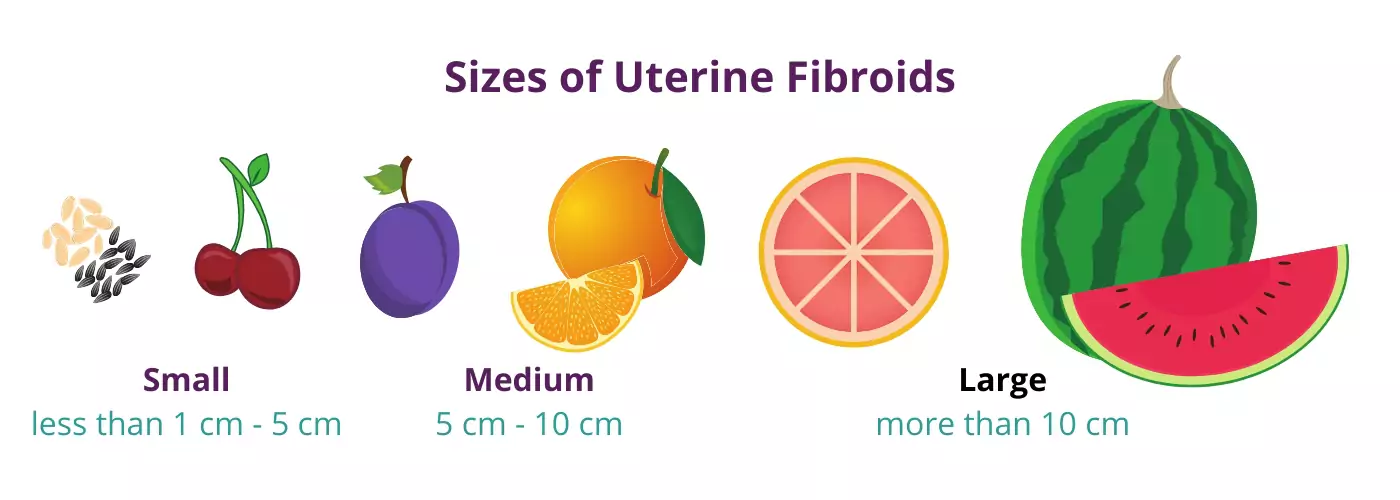What Causes Uterine Fibroids?
While there’s no consensus on what causes uterine fibroids (UF)—nor what causes fibroids to grow—we do know what some of the potential risk factors are. How heavily each factor weighs in any given case, however, remains uncertain.
What causes fibroids?
Ongoing research has provided significant evidence that genetics, race, hormones, and body type play a role in what causes uterine fibroids.

It can be frustrating to not know what’s causing your fibroids, but thankfully, there are some potential risk factors that have been pinpointed.
(This design was created by @pch.vector for Freepik.)
These risk factors specifically include:
Family history
Women with fibroids tend to have at least one close relative (usually a mother or sister) who has or had fibroids.
Race
Black women in the U.S. are two to three times more likely to get fibroids than other racial groups. They also generally develop them earlier (in their 20s) than white women do (in their 30s and 40s).
Hormones
Estrogen production appears to stimulate the growth of fibroids. During pregnancy, fibroids have been found to grow larger during the first trimester, then shrink after the baby is born. Fibroids usually shrink after menopause, though hormone therapy can perpetuate the problem.
Early first menstrual cycle
Starting your period before the age of 10 appears to increase the risk of fibroids. Early pregnancy decreases that likelihood. Adolescent girls rarely develop fibroids, and fibroids have not been found in girls prior to their first menstruation.
Obesity
Obese women are two to three times more likely to develop fibroids over women of average weight.
Are there any other potential causes of fibroids?
In addition to the above list, there is some supporting evidence for the following potential risk factors:
- Foods high in fat and salt, caffeine and alcoholic beverages, and refined carbohydrates
- Hypertension (high blood pressure)
- Genetic abnormalities
- Abnormalities in growth factors (proteins in the body that regulate cellular growth, reproduction, and healing)
- Blood vessel abnormalities
- Unusual responses of soft tissue to injury
- Uterine infections
What causes uterine fibroids to grow?
Fibroid sizes can vary significantly. Scientists aren’t sure why some fibroids remain small (one to five centimeters) and others grow much larger (10 or more centimeters). There are also fibroids that grow to be somewhere in between those two ranges.

This infographic from USA Fibroid Centers demonstrates the sizes of fibroids in comparison to common food items, such as seeds, nuts, and fruits.
Hormones can play a significant part in this—enlarging fibroids during pregnancy and shrinking them after menopause. This, however, doesn’t account for all fibroid cases. Rapid fibroid growth may indicate malignancy; though, fewer than 1% of fibroids are cancerous.
Despite the rarity of malignant fibroids, fast-growing fibroids bear watching, as a fibroid’s size can cause a variety of symptoms. These include anything from pain and heavy bleeding to dangerous interference with other organs and systems. The larger the fibroid, even when benign, the more damage it can do—and more challenging it can be to remove.
It’s important to be proactive about your reproductive health. Have regular checkups with your gynecologist and let them know if you are experiencing any unusual pain, discomfort, or bleeding; have a protruding lump in your abdomen; or any other related symptoms.


